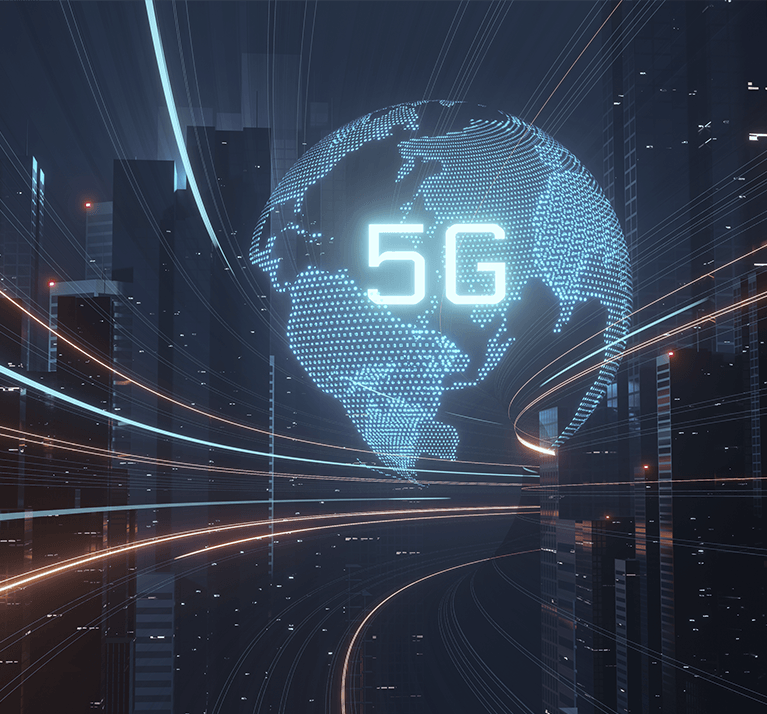Ahlian Jian Insights
Exploring the latest trends and news in various fields.
Forget Wi-Fi: Meet the New Kid on the Block, 5G
Discover the future of connectivity! Explore why 5G is set to revolutionize the internet and leave Wi-Fi in the dust.
What is 5G and How Does it Compare to Wi-Fi?
5G is the fifth generation of mobile network technology, designed to provide faster speeds, lower latency, and increased connectivity compared to its predecessors. With potential download speeds exceeding 1 Gbps and the ability to support up to one million devices per square kilometer, 5G is paving the way for advancements in various sectors, from autonomous vehicles to smart cities. It operates on a mix of frequency bands, including low, mid, and high-band spectrum (often referred to as mmWave), enabling quicker data transmission and improved user experience, especially in densely populated areas.
On the other hand, Wi-Fi is a wireless technology that enables devices to connect to a local area network (LAN) and access the internet. While modern Wi-Fi standards, such as Wi-Fi 6, can provide impressive speeds up to 9.6 Gbps, it usually operates within a shorter range and is dependent on a physical router. Unlike 5G, which is designed for wide-area coverage, Wi-Fi is best suited for home and office environments where users need fast internet access without the constraints of mobile data plans. Both technologies have their unique advantages, and understanding their differences can help consumers choose the right solution for their connectivity needs.

5G: The Future of Connectivity for Smart Devices
The advent of 5G technology is set to revolutionize the way we connect and interact with smart devices. Offering significantly higher speeds, lower latency, and increased network capacity, 5G paves the way for enhanced performance of Internet of Things (IoT) devices. With the ability to support a greater number of devices per square mile, smart homes, cities, and industries can operate more efficiently. For instance, in a smart city scenario, everything from traffic lights to waste management systems can communicate in real-time, ultimately leading to improved resource management and sustainability.
Moreover, the implications of 5G extend beyond merely faster internet speeds; it heralds an era where smart devices can seamlessly integrate with one another, creating a robust network of interconnected technologies. This synergy will enable advanced applications such as autonomous vehicles, augmented reality experiences, and remote healthcare services. As industries continue to adopt 5G technology, we are likely to witness transformative changes that redefine connectivity, making our lives more convenient and interconnected than ever before.
Is 5G the Solution to Wi-Fi Limitations?
As the demand for high-speed internet continues to grow, many are questioning if 5G technology can effectively address the limitations of traditional Wi-Fi. While Wi-Fi has been a reliable standard for years, it often struggles with issues such as limited range, congestion in crowded areas, and reduced speeds during peak usage times. On the other hand, 5G networks promise to deliver faster download and upload speeds, lower latency, and increased capacity, potentially making them a formidable alternative. The enhanced capabilities of 5G could help alleviate some of the pressure on overburdened Wi-Fi systems, particularly in urban environments where connectivity demands are at their highest.
However, it's essential to recognize that 5G and Wi-Fi serve different purposes and have unique strengths. While 5G offers improved speed and connectivity over a larger area, it may not replace Wi-Fi, especially in indoor environments where signal penetration can be challenging. Many experts argue that the future will likely involve a coexistence of both technologies, allowing users to take advantage of the strengths of each. For more information on the distinctions between these technologies, you can visit TechRadar for a comprehensive breakdown. Understanding both technologies' roles in our increasingly connected world will be crucial as we navigate the evolving landscape of mobile communication.